1936 PACKARD SUPER 8 PHAETON
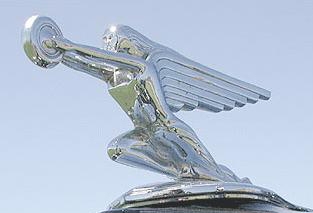
AEOLUS: In Greek Mythology King of the Winds.
This was the Packard Phaeton hood ornament
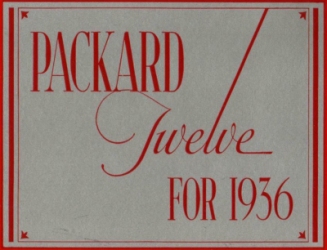
Packard brochure - 1936
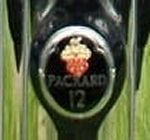
Packard 12 emblem
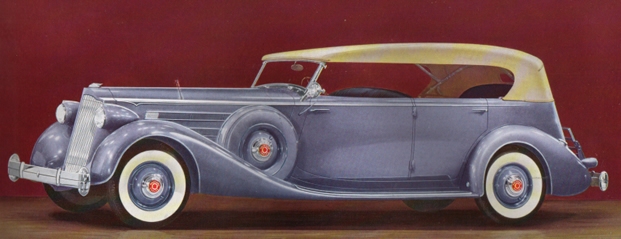
Photograph of this model of Packard made from a brochure published by the
Packard Company of all of the 1936 models.
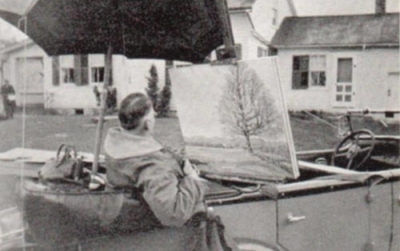
Robert Strong Woodward seated in the rear seat of his
Nash Advanced Six, painting in 1933, before he owned the
8 cylinder 1936 Packard. The painting being made is
The North Mowing.
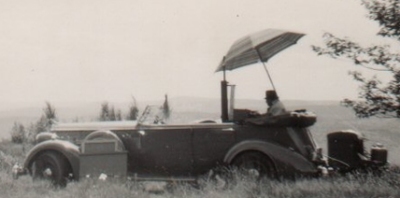
Robert Strong Woodward painting in the back of the
1936 12-cylinder Packard
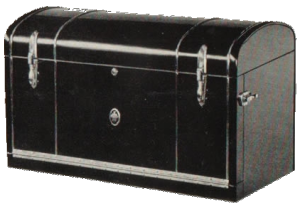
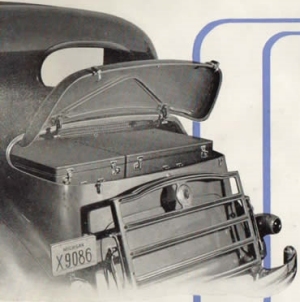
Rear area of Packard where wheelchair
would be mounted.
After the days of Fabian, I was one of the chauffeurs, and what pride it was for a teenager to drive a long 8-cylinder open Packard. But I did get good at it and he trusted me. I would spend my time nearby reading, taking college correspondence courses or learning the wild flowers or native trees. And, I was nearby if he dropped something which he was unable to reach, or needed his lunch removed from the trunk, or needed his leg urinal bag emptied. Sometimes he would ride back home still sitting in the rear seat, but usually I would lift him from the rear seat up into the front seat, and pack up the easel and painting materials in the rear for a safer transportation back to the studio.
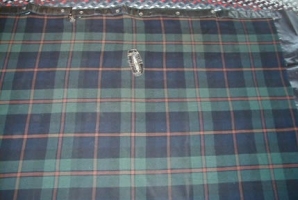
Old sleigh blanket for front seat. Note
grommets at top and hole for shifting lever.
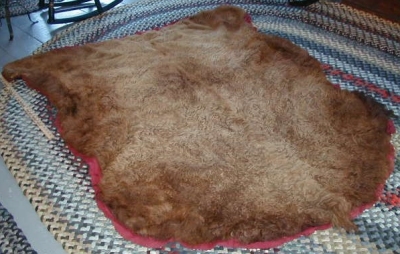
Buffalo robe for rear seat passengers.
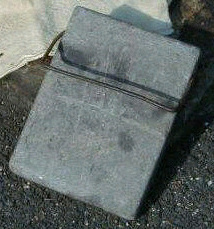
Soapstone footstone -This rock
was heated by the fireplace and
put by the feet of passengers
providing warmth for hours.
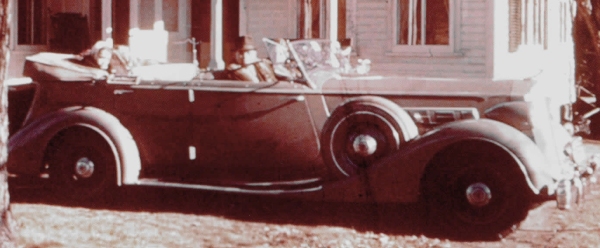
An old photograph of MLP driving RSW in the Packard with nurse Lena Putnam in the rear.
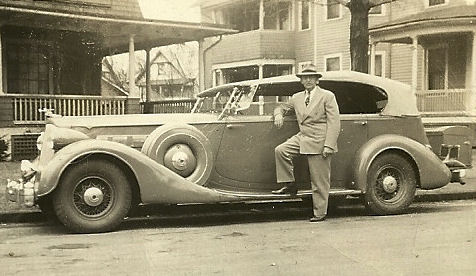
RSW's 8-cylinder Packard Phaeton in 1947, Chauffeur: Arthur Bressor.
MLP
Jan. 2007
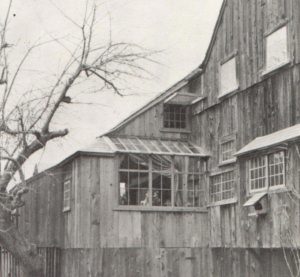
Extension added to garage (right center).
Click here to see the original specifications page from the Packard Phaeton purchased for Robert Strong Woodward.
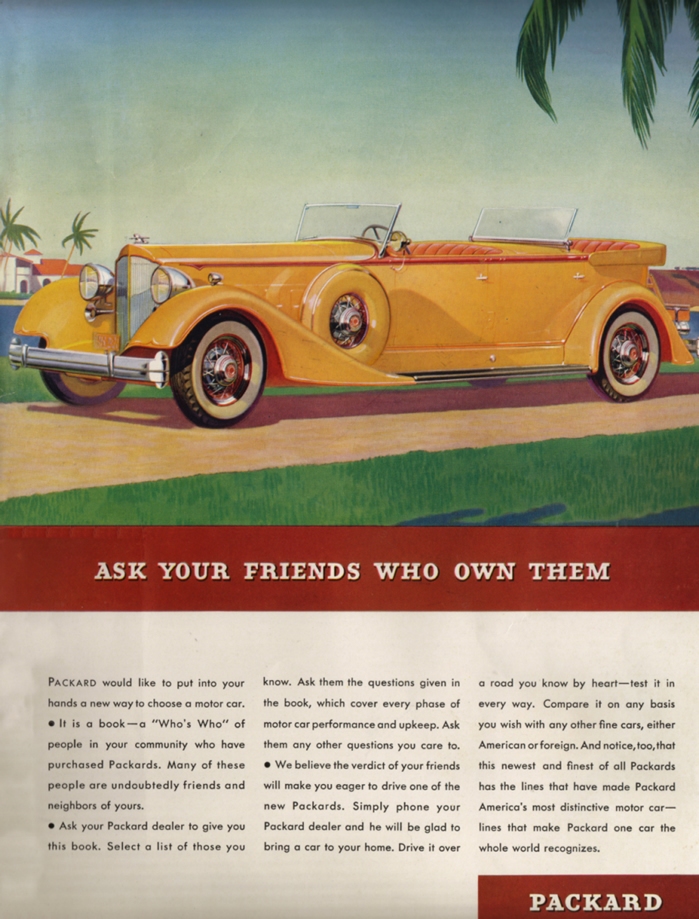
This is a scan of an original advertisement for a 1936 Packard from Life Magazine
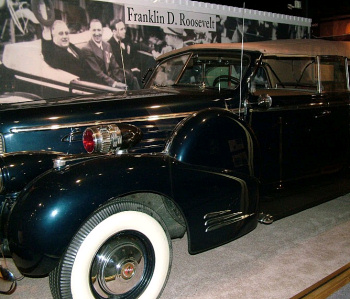
Franklin Delano Roosevelt's 1938 12-cylinder Packard.
From: Information and History | Conceptcarz.com
Released in 1915, the technology embodied in the Packard Twelve represented a major breakthrougn in the automobile industry. It achieved great fame in its association with the one person who claimed he could not do without it - President Franklin Delano Roosevelt. Roosevelt claimed that he chose the Packard for its reliability, but it is said that he was drawn to it by its sheer power. It was one of the last automobiles to come equipped with a 12-cylinder engine, when in 1939 Rollson (popularly known as Rollston) mounted the body. The Packard was the first armored car with bullet-proof glass to be used by an American president. Its lightweight, sporty body came to signify American prosperity.
From the autochannel.com: Packard continued to lead the luxury-car segment, but the annual model change and changing demographics were already weakening its position. Packard was the car of the old moneyed class, while Cadillac was favored by the emerging new rich. The Depression was eroding the old aristocracy and when prosperity returned after World War ll, Cadillac soared and Packard was doomed.
The following is copied from Conceptcarz.com that describes the provenance of the Robert Strong Woodward Packard. It includes a current photograph of the vehicle. The vehicle is no longer grey, but has been painted burgandy.
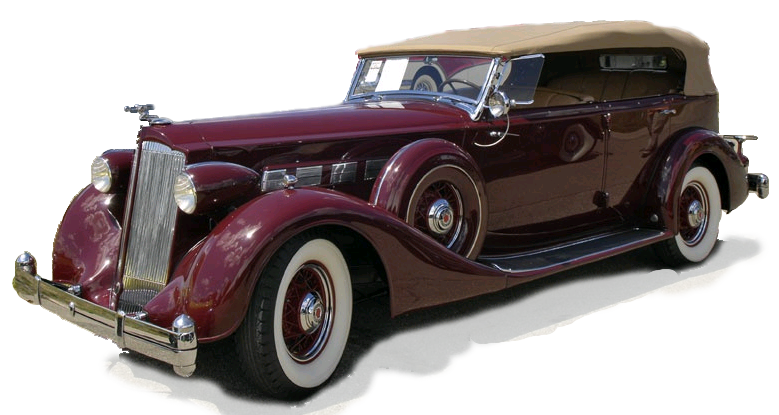
This is believed to be a current photograph of the refurbished Packard Phaeton that belonged to Robert Strong Woodward.
Chassis Num: 757528
Engine Num: 757528
The Packard Super 8 was produced from 1935 through 1939. There were several new introductions for the 1935 Packard such as to the steering, suspension, and more horsepower. The new bodies offered true envelope styling and for the first time, the cars were designed as a whole, with body, hood, fenders and running boards integrated into a single design.
The 1936 fourteenth series Packards were largely carried over from the prior year. Several changes were added such as a new radiator which was raked back five degrees. This would be the final year for the 17-inch wire wheels and the traditional double blade bumpers with hydraulic dampers.
This example is an original five-passenger phaeton. It is one of just five or six known to have survived. Its first owner was Robert Woodward, an artist from Greenfield, Massachusetts. The car would stay in his care until his death in 1957. The car was then acquired by Roderic Blood who used the car as his fair-weather daily driver. In 1967 the car was sold to Mr. Sawyer of Gloversville, New York. It was sold shortly thereafter to Mr. Austin of Gouverneur, New York. It would remain in his care until 1982 when it was purchased by Manny Souza, who sold it to Jason Siegel. Mr. Siegel was a past president of the Florida region of the Classic Car Club of America. In 1990, Siegel began a ground-up restoration. The work required more than two years to complete. After completion the car was shown, earning both AACA National First Place and CCCA Senior awards.
The car remains in good condition in modern times. It is well-equipped with side curtains, top boot, optional wind-wings, correct Packard spot lamp, original Packard heater, and a Packard Goddess of Speed hood ornament.
In 2008 this 1936 Packard Super Eight Five-Passenger Phaeton was brought to RM Auctions 'Vintage Motor Cars of Meadow Brook' where it was estimated to sell for $225,000-$275,000. Bidding reached $200,000 but was not enough to satisfy the reserve. The lot was left unsold.
The car was last known to have been sold at auction in Florida. The auctioneer would not give out the name of the buyer.
Addendum: MLP July 2009
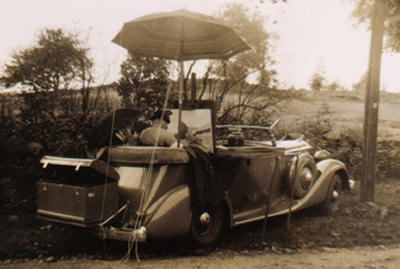
Robert Strong Woodward painting in the back of the Packard.
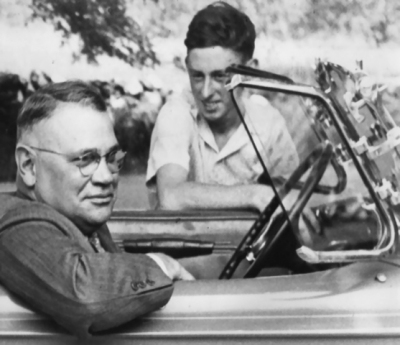
The author, Mark Purinton, and RSW in his 1936 Packard.
Addendum 2:
It is our opinion that Robert Strong Woodward himself believed the automobile to be a Packard Twelve. In a handwritten comment about Fabian, he writes:
I owned at the time a large and very heavy Packard Twelve. This car, far beyond any I could afford to buy myself had been a gift to me from one of my patrons and friends, Mrs. William H. Moore. Realizing that because of my physical handicap I worked at my out-door painting under great disadvantage in the average car, Mrs. Moore presented me with a car large enough to use my easel and painting outfit on the back floor.
Portion of handwritten letter by Robert Strong Woodward
Portion of handwritten letter by Robert Strong Woodward
concerning Fabian Stone.
Addendum 3:
In the continuation of our search for the Woodward Packard, we received the following letter concerning the known owners of Packard Super 8 automobiles. Hopefully, eventually we will locate the actual car owned by RSW. (We are eliminating the names and addresses for privacy reasons of these owners.)
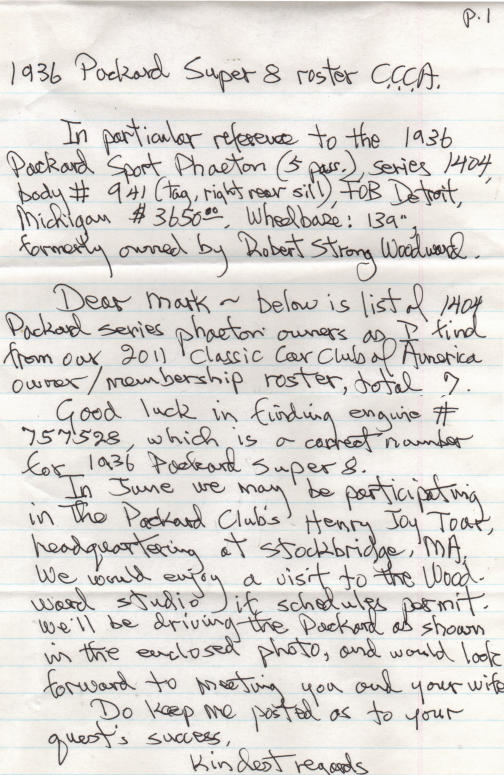
Letter from a New England Packard expert providing a list
of owners of 1936 Packard Phaeton Super 8 automobiles.
MLP
2014

